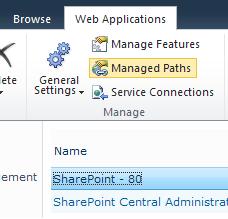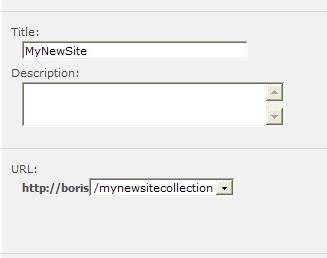So when you’ve installed the SharePoint Server 2010 (SPS) you get a load of new templates including web daytabase templates:
- Assets Web Database
- Charitable Contributions Web Database
- Contacts Web Database
- Issues Web Database
- Project Web Database
We’ll need to figure out how these guys work.
When I create a new site using one of these templates, I expect that I’ll get that silly “Creating Site” pinwheel but, instead, I get a page that says:
Preparing Site:
Someone has recently made changes to this site and
the site is being updated. If the site remains offline
for an extended period of time, contact a site owner.
And since, this page never goes away, even after an hour and a hundred refreshes, no Bevis, it’s always going to be the same. And, as usual, Since I’m the site owner, again, I’m stuck totally dependent on my SharePoint community friends. At lease it doesn’t invite me to “Troubleshoot Problems with SharePoint Server.”
Lucky for us, our new best friend Marc gives us a clue here. He says we need:
- An Access Service Application
- An Access Database Server
- To enable session state.
I’m a little confused on the first two. For the last one, Marc is kind enough to provide the PowerShell command:
enable-spSessionStateService
–DataBaseName <SomeNewDatabaseName>
So I go into Central Admin and find Application Management and click on Manage Service Applications. Here we can configure all our service applications and the Access service allows us to throttle all kinds of Access activity.
If we try Application Managment | Manage Services on Server we can see that our Access service is stopped and we can start it there.
So now I can get my web database site built using the projects web database template where I get a cool little grid view thing. I can create projects, users, customers and, on projects, I can create tasks.
But on the Report Center, I can select a report and get a pinwheel but then I get this curious error page:

Report Center: File Not Found Error
We can take that coorelation ID to our ULS Error Tool we talked about here. But we better be careful because it’s from an unknown publisher. Once it opens, we simply filter for the coorelation id.
Well that didn’t work. Seems like the doggone thing is moving so quick, Ihave to go File | Abort Load. Then I can find my correlation ID in the correlation column and then filter for that value and I find five rows, including one that says:
Name=Request (GET:http://MyServer:80/MySite/Projects/
AccessServices/Reports/ActiveTasks.aspx)
I can try that page but I get a similar error without all the surrounding folderall.
Then the next error says:
System.IO.FileNotFoundException: Could not load file or assembly
'Microsoft.ReportingServices.SharePoint.UI.WebParts, Version=10.0.0.0,
Culture=neutral, PublicKeyToken=89845dcd8080cc91' or one of its
dependencies. The system cannot find the file specified.
Somehow, I ended up here and worked these mods and then everything’s blown up; I get a white screen with:
An unexpected error has occurred.
I revert the chages and no luck. Dog…
I open my Hyper-V manager and roll back to this afternoon.
Sweet, back in business. We’ll have to look at this more in detail later.
-robot




